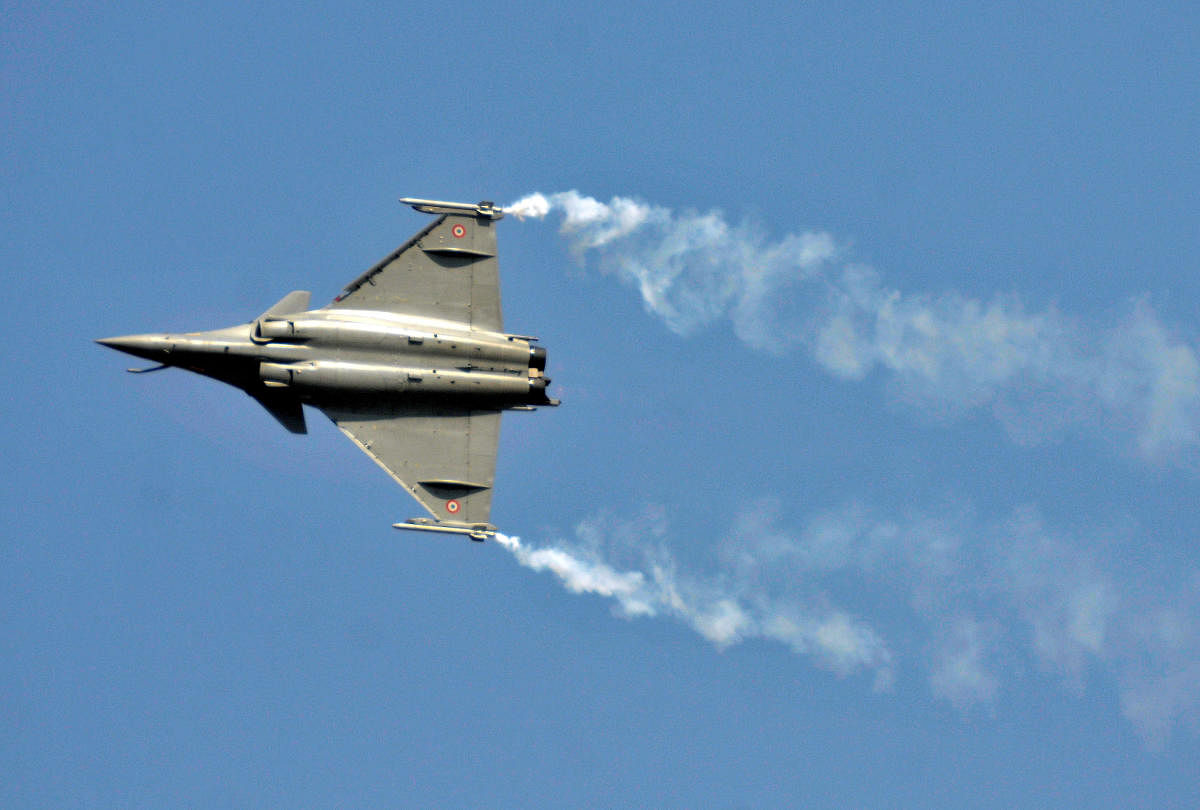
In reference to the North Star, Caesar tells Cassius in Shakespeare's Julius Caesar: “I could well be moved if I were as you; if I could pray to move, prayers would move me; but I am constant as the North Star..."
The Supreme Court in its judicial pronouncements is viewed like the North Star. In the case of 36 Rafale aircraft purchase order, the court declined to interfere with the deal. Apparently, the judgement was in sync with the ‘Wednesbury Principle of reasonableness’.
However, Yashwant Sinha, Arun Shourie and Prashant Bhushan moved the Supreme Court for a review of the judgement calling it flawed as it was largely based on an unsigned note given by the government in a sealed envelope.
Rafale is one of the finest multirole fighter aircraft available in the international arena. The cutting-edge technology of Rafale would give the Indian Air Force (IAF) the much-needed punch to safeguard the security of our air space.
With China setting up production of its frontline fighter aircraft in Pakistan, the likelihood of its gaining access to Pakistan’s airbases for future military operations is well on the cards. This further amplifies the need for advanced fighter aircraft by the IAF.
The key issues that have docked the Rafale deal are the purchase of 36 aircraft against the earlier projections of 126, pricing and selection of the Indian offset partner.
Acquisition of Rafale is not the first defence deal that has rocked the country. In the past, many defence deals such as Bofors, Coffingate, Scorpene class submarines, Agusta Westland helicopters among others were known to have been riddled with corruption.
Stephen D Morris, a professor of politics in the University of Alabama Press, Tuscaloosa, US, writes that ‘political corruption is the illegitimate use of public power to benefit a private interest’.
Lack of transparency in political funding is a key factor of corruption in India. The BJP government came to power in 2014 on the agenda to remove corruption. Though it has made some headway in this regard, it has done little to bring transparency in political funding.
The kick-backs received from the defence acquisitions have been a major source of political/individual funding to run ‘Pork Barrel’ politics. Pork Barrel is a metaphor for the appropriation of government spending to benefit constituents of politicians/ political parties to garner votes.
India is not exclusive in this regard. In the US, Pork Barrel money link extends back to the American civil war era when Abraham Lincoln gave contracts to the northern businessmen in exchange of campaign support. By the 20th century, it became a regular feature of the US government’s wasteful spending.
In the 2014 budget, more than $90 million was allocated for tanks upgrade that supposedly the US Army didn’t need. In 2017, Sau Paulo newspapers estimated that President Temer’s Pork Barrel politics could cost Brazil nearly $10 billion.
The international ‘arms bazaar’ is flush with Pork Barrel funds being siphoned off to political parties or leaders. The current international arms trade is valued at $100 billion. Andrew Feinstein, a South African politician, in his book ‘The Shadow World: Inside the Global Arms Trade’ has given enough evidence on corruption in arms deals.
Selection of offset partners is a well-known modus operandi for this purpose.
Despite being the second largest army in the world, our arms industry continues to languish. Our ordnance factories and Defence Research and Development Organisation (DRDO) have failed to deliver. Their success is limited to Agni, Prithvi missiles and some other equipment.
The failures/delays are far too many which include Kaveri engine for fighter aircraft, INSAS (Indian Small Arms Systems), guns and a host of other military hardware. The DRDO and the ordnance factories have largely been acting as middlemen for the import of defence equipment rather than being the centre of excellence for developing futuristic defence technology.
Between 2008 and 2017, India spent nearly $100 billion in defence acquisition of which 65 to 70% went into import of defence hardware. The original DPP (Defence Procurement Procedure) of 2005 has been revamped six times.
It was the DPP of 2013 that defined the key objectives of the ‘offset policy’. These were: leverage capital acquisitions to develop defence industry, foster development of international competitive enterprises and augment capacity for research, design and development of defence equipment. Despite these policy enunciations, India has achieved little in this regard.
Let’s believe that the price per aircraft negotiated by the government in the current Rafale deal for the fast track supply of 36 aircraft is lower than the previous quote for 126 fighters. The controversy related to the selection of the offset partner.
‘Make in India’
The offset is of the tune of Rs 30,000 crore. Former French president Francoise Hollande has stated that there was little choice but for Anil Ambani’s company, Reliance Defence, as the offset partner. The NDA government on its part has asserted that it had no role in the selection of the offset partner and it was entirely the manufacturer’s decision.
The government has advocated the ‘Make in India’ philosophy to propel our industry. The amendments made to DPP/offset policy in 2016 and 2018 were aimed to make India self-reliant in defence equipment.
Shouldn’t the government have spelt out the criteria for offset partner with proven credentials, both technically and financially, if it is serious in making India self-reliant in defence equipment production?
Despite the offset policy and technology transfer being in vogue for many years, India continues to be the largest defence importer. China and India were in the same league till the late nineties.
Today, China is amongst the five largest exporters of defence equipment. To pave way for defence production in India, we need better transparency in defence deals, selection of offset partners and accountability of DRDO and ordnance factories.